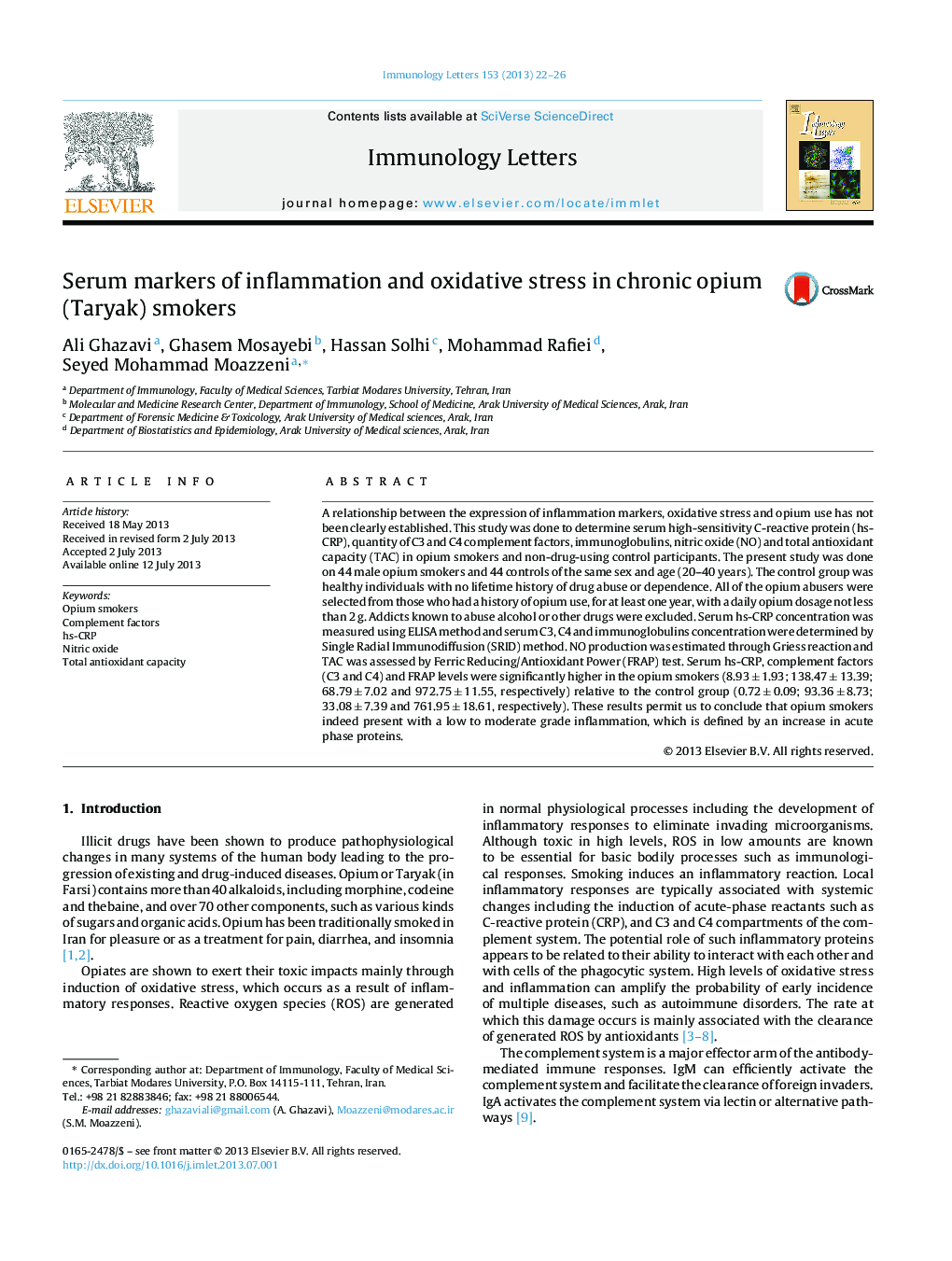| Article ID | Journal | Published Year | Pages | File Type |
|---|---|---|---|---|
| 3355517 | Immunology Letters | 2013 | 5 Pages |
•We found that serum hs-CRP levels were 12-fold higher in the addicts group compared to controls.•Our results show an increase in C3 and C4 component of complement in opium smokers.•This result shows that, opium increases the antioxidant capacity of the serum.•This study also suggests that opium is a drug with potentially helpful (antioxidant) and harmful (inflammatory) effects.
A relationship between the expression of inflammation markers, oxidative stress and opium use has not been clearly established. This study was done to determine serum high-sensitivity C-reactive protein (hs-CRP), quantity of C3 and C4 complement factors, immunoglobulins, nitric oxide (NO) and total antioxidant capacity (TAC) in opium smokers and non-drug-using control participants. The present study was done on 44 male opium smokers and 44 controls of the same sex and age (20–40 years). The control group was healthy individuals with no lifetime history of drug abuse or dependence. All of the opium abusers were selected from those who had a history of opium use, for at least one year, with a daily opium dosage not less than 2 g. Addicts known to abuse alcohol or other drugs were excluded. Serum hs-CRP concentration was measured using ELISA method and serum C3, C4 and immunoglobulins concentration were determined by Single Radial Immunodiffusion (SRID) method. NO production was estimated through Griess reaction and TAC was assessed by Ferric Reducing/Antioxidant Power (FRAP) test. Serum hs-CRP, complement factors (C3 and C4) and FRAP levels were significantly higher in the opium smokers (8.93 ± 1.93; 138.47 ± 13.39; 68.79 ± 7.02 and 972.75 ± 11.55, respectively) relative to the control group (0.72 ± 0.09; 93.36 ± 8.73; 33.08 ± 7.39 and 761.95 ± 18.61, respectively). These results permit us to conclude that opium smokers indeed present with a low to moderate grade inflammation, which is defined by an increase in acute phase proteins.
